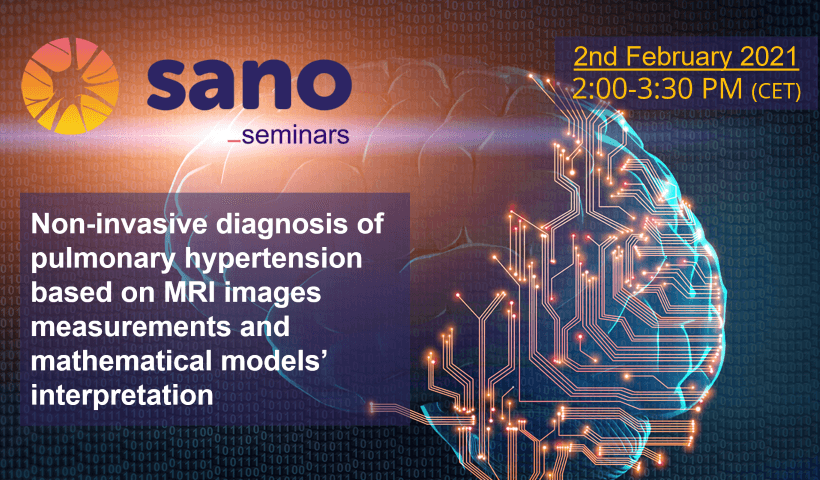Abstract
Pulmonary hypertension (PH) is a clinical condition characterised by an increased mean pulmonary arterial pressure measured, at rest, by right heart catheterisation (RHC). RHC is currently considered the gold standard for diagnosis, follow-up and measurement of response to treatment. Although the severe complications and mortality risk associated with the invasive procedure are reduced when it is performed in a specialist centre, finding non-invasive PH diagnosis methods is highly desirable.
Non-invasive, non-ionising imaging techniques, based on magnetic resonance imaging (MRI) and on echocardiography, have been integrated into the clinical routine as means for PH assessment. Although the imaging techniques can provide valuable information supporting the PH diagnosis, accurately identifying patients with PH based upon images alone remains challenging. Computationally based models can bring extremely valuable, additional insights into the haemodynamic changes occurring under the manifestation of PH.
The presentation will seek to illustrate how the physiological status of the pulmonary circulation can be inferred using solely non-invasive flow and anatomy measurements of the pulmonary arteries, measured by MRI and interpreted by 0D and 1D mathematical models [1]. The talk will also emphasise how models’ derived (patho)physiological parameters, associated with wave reflections in the pulmonary arteries and integrated into machine learning algorithms, delivered a correct diagnosis of PH, compared with the gold-standard invasive pressure measurement, in 92% of cases [2].
[1] A. Lungu, J. Wild, A. Swift, D.Capener, D. Kielly, D.R. Hose, MRI model-based non-invasive differential diagnosis in pulmonary hypertension, Journal of Biomechanics, Volume 47, Issue 12, 2014, pp 2941-2947
[2] A. Lungu, A. Swift, D. Capener, D. Kielly, D.R. Hose, J. Wild, Diagnosis of Pulmonary Hypertension from MR image based computational models and decision tree analysis, Pulmonary Circulation, vol. 6, pp. 181-190, 2016

Author
Technical University of Cluj-Napoca, Romania
Date and time
Tuesday, 2 February 2021, 2:00-3:30 PM (CET)




